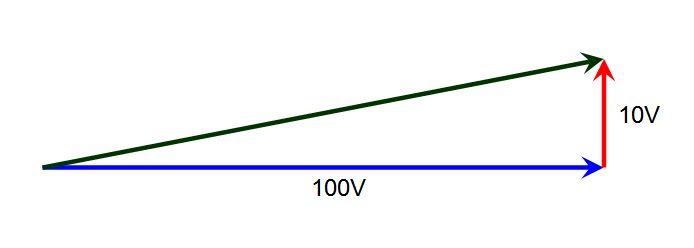 Sine waves are fascinating things. The slope of a sine wave is another sine wave, just shifted in time (phase). You can also add two sinusoidal waves, each of which has a different amplitude and a different zero crossing point (phase) and still end up with a sine wave. Furthermore, the addition of these sine waves obeys the rules of vectors (but using phase instead of direction) so you can draw a triangle and calculate the resulting amplitude and phase from that.
Sine waves are fascinating things. The slope of a sine wave is another sine wave, just shifted in time (phase). You can also add two sinusoidal waves, each of which has a different amplitude and a different zero crossing point (phase) and still end up with a sine wave. Furthermore, the addition of these sine waves obeys the rules of vectors (but using phase instead of direction) so you can draw a triangle and calculate the resulting amplitude and phase from that.
In the picture we are adding a 100V sine wave to a 10V sine wave which is phase shifted by 90° relative to the larger voltage.
What is the amplitude of the resultant sine wave?
Author: Leslie Green